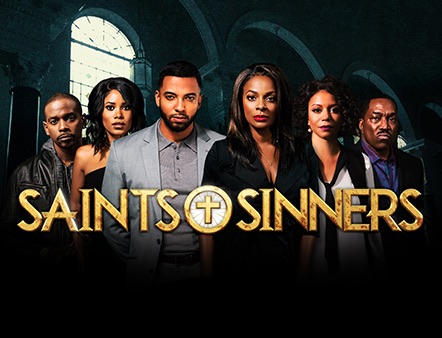State of Slates Is Key Variable In Multicast Equation

Antenna TV and Bounce TV, two leaders in the multicast network space, are making big splashes early in 2016.
Tribune Broadcasting’s Antenna TV, which shows classic TV series from the 1950s through the ’90s, began airing episodes of The Tonight Show Starring Johnny Carson on Jan. 1. Shown for the first time since the show went off the air in 1992, the Carson episodes have given the five-year-old multicast net immense exposure.
“It was a game-changer for Antenna TV,” says Sean Compton, president of strategic programming and acquisitions for Tribune and Antenna. “It’s changed the network’s life. People are looking for us.”
Meanwhile, following the success of its three original sitcoms, the African-American-focused Bounce TV is debuting the first multicast original drama series, Saints & Sinners, on March 6.
Carson reruns and a drama centered around a church in the South don’t have much in common, and neither is part of a Netflix/ HBO-level investment in programming. But each signals for the multicast landscape the importance of entertaining and marketable programming, properly targeted, that enables these emerging outlets to compete with established broadcast and cable nets.
“It’s all about programming,” says Michael Kokernak, president of the multicast consultancy Across Platforms. “There’s no reason why broadcast can’t move more viewership to digital subchannel networks.”
Me-TV, Weigel Broadcasting’s Nielsen-rated classic-show net, is in virtually all key DMAs and its ratings meet or exceed those of most cable networks, says Neal Sabin, Weigel Broadcasting vice chairman. Me-TV ranks 10th in total weekday daytime viewers—besting cable stalwarts History, TBS and A&E—and No. 24 in weeknight primetime, ahead of Lifetime, TV Land and Comedy Central.
The smarter way to stay on top of broadcasting and cable industry. Sign up below
Sabin says that broadcast partners often turn Me-TV into a duopoly-type station or put it on the primary channel. It’s a combination of having the right programming and knowing how to promote, schedule and sell. “We position ourself as a broadcast network,” he says. “The bottom line is, people still watch a lot of traditional television.”
To acquire the Carson library, Compton and Antenna TV had to win over the Carson Foundation, plugging the fact that Antenna TV is free, over-the-air, ad-supported and reaching 88% of U.S. TV households. Especially with the Tonight Show episodes, Antenna TV’s programming, which also includes Bewitched and Dennis the Menace, hits a sweet spot for viewers. “You turn us on, it’s comfort food television,” Compton says. “It brings back memories.”
Related: Despite Uncertainty, Multicasters Are Confident About Post-Auction Landscape
Bounce TV’s jump into originals is part of a long-term plan, says Jonathan Katz, chief operating officer of Bounce TV and president and CEO of Katz Broadcasting. The net’s success in distribution, ratings and revenue has given it the financial flexibility to fund originals and grow for the future. “We think originals are critical for a demo-centric network that competes regularly against the broadcast and cable universe,” Katz says.
The third season debut of comedy series Family Time, Bounce’s first original show, in October captured 311,000 total viewers, including 158,000 in the 18-49 demo, a 31% increase from the season 2 premiere. Katz “absolutely” expects to eventually have originals on Katz Broadcasting’s three young nets—male-focused Grit, female-focused Escape and comedy channel Laff—down the road when they deliver the right scale of audience. He describes the trio, along with Bounce TV, as “emerging broadcast networks,” not multicasters or diginets. “We believe our networks are first-class; they’re not second-class citizens,” Katz says. “We’re applying cable’s successful model to serve the broadcast-only viewer.”
Of course, not every multicast is designed to produce originals or even wants to. As long as nets carve their own niche and have quality programming, multicast leaders see room for more in the sphere.
“It never ceases to amaze me, the ability of people to come up and develop new programming formats,” says Ron Garfield, GM and executive VP of Buzzr, FremantleMedia’s retro game show network that debuted last June. “I always believe that a good programming format genre concept will find its way.”
Buzzr is relatively unrestricted in what it can do, Garfield says, with a library of 40,000 episodes covering six decades of game shows.
Cozi TV, NBCU’s three-year-old multicast net, has found success in easy-to-watch dramas with quirky characters and recognizable brands, such as Murder She Wrote, The Munsters and The A-Team.
“I see multicast thriving with new entrants,” says Meredith McGinn, senior VP of Cozi TV. “I’m confident in Cozi’s success in this space. The competition helps. It shows the strength of free, over-the-air broadcasting.”
Amid a noisy and volatile television landscape, multicasts also stand out for being less impacted by DVR. Compton likens the sphere to radio, still a dominant medium.
“There wouldn’t be so many people in it if it wasn’t such a good business,” Garfield says.
